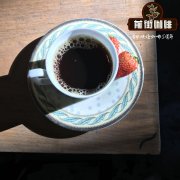Laos Coffee Brand recommendation _ Laos Coffee cultivation introduction _ how about Lao Coffee

Professional coffee knowledge exchange more coffee bean information please follow the coffee workshop (Wechat official account cafe_style)
Many people may not believe that Laos really produces high-quality coffee. But just because you don't know it doesn't mean it doesn't exist. Laos does produce the best coffee in the world. Compared with other parts of Southeast Asia, Laos has a short history of growing coffee and was not introduced here by the French until the early 20th century. However, Laos's unique natural environment makes Laos coffee vaguely reveal the king atmosphere of the top coffee in Southeast Asia.
Laos coffee is famous for its rich aroma and delicate taste, with citrus fruit and floral aromas giving tasters a lingering aftertaste with a hint of chocolate sweetness. Compared with most heavy-flavored Southeast Asian coffee, Laos coffee tastes fresher and milder.
There is a reason why the Borofen Plateau is ranked as the top coffee producer in the world by National Geographic magazine. Moderate altitude and unique volcanic ash geology create a unique taste of Laos black coffee.
The home of Laven.
Most of the farmers who grow coffee on the Bolaven plateau come from a local minority, the Lofen. The ancestors of the Luofen people were a branch of the Khmer empire that flourished in the ninth and tenth centuries. They named this plateau area Borofen, which means the home of the Luofen people. The Katu and Alak also grow coffee in this area. The annual harvest season. Local farmers spread the harvested coffee beans flat on the ground and let the bright sunshine on the plateau dry them naturally.
Laos black coffee is mainly grown in the Bolaven plateau of the southern province of Bassai, and is basically distributed around Paksong, which is also known as the coffee capital of Laos, where a grand coffee festival is held every year. The latitude of the earth is about 15 degrees north latitude and the elevation is more than 1300 meters. It has a pleasant climate and abundant rainfall, while the rich nutrients in volcanic ash geology provide unique soil conditions for the local coffee. In Laos, the famous Arabica varieties and Robusta varieties are grown. At first, all the coffee grown in Laos was Arabica, and then about 80% of the growing areas were converted to Robusta because of diseases and insect pests. Now Laos, like its neighbor Vietnam, has begun to re-expand the planting area of Arabica coffee.
The production of coffee beans in Laos is small, and almost all Arabica coffee is sold to France, a relationship that has not changed since colonial times. Obviously, after the French left, the Laotians didn't know how to sell coffee. Robusta coffee was exported. It was sold to Thailand and went to Nestle. Maybe this is why Thai Nestle coffee tastes so fragrant?
At present, there are no large-scale coffee plantations in Bazhai, and most of them are small-scale production by small farmers. Although Pakistan produces the world's top coffee, the tourism industry is just in its infancy. Few foreign tourists come here, and tourists from Europe, the United States and China are mostly attracted by Luang Prabang and Wanrong.
If you are an avid coffee enthusiast, you can also come to the Boloven Plateau to visit the local village. November to January is the harvest time for Arabica coffee, while February to March is the harvest time for Robusta. If you're not crazy about coffee, go to Vientiane or Luang Prabang cafes and find first-class local coffee, but remember to choose Arabica coffee.
Laotians like to drink coffee from glass cups. They pour condensed milk into the cup of coffee and mix the taste of coffee and condensed milk, which is more suitable for the traditional taste of Laotians. After drinking coffee, Laotians usually have a light cup of green tea.
Coffee is an indispensable drink in many people's life, mellow and smooth taste exhilarating. Cafes can be found everywhere in the big towns of Laos.
Qianjie coffee: Guangzhou bakery, the store is small but a variety of beans, you can find a variety of unknown beans, but also provide online store services. Https://shop104210103.taobao.com
Important Notice :
前街咖啡 FrontStreet Coffee has moved to new addredd:
FrontStreet Coffee Address: 315,Donghua East Road,GuangZhou
Tel:020 38364473
- Prev

The "CAFETEL" of the Japanese women's hotel is full of pink girls' hearts.
Professional coffee knowledge exchange more coffee bean information please follow the coffee workshop (Wechat official account cafe_style) the hotel's full name is "CAFETEL Kyoto three for Ladies", which opened in Kyoto on July 2. Belongs to the integration of CAF and HOSTEL comprehensive catering and accommodation facilities. The cafe on the first floor of Kyoto Women's College, which was promoted to Internet celebrities as soon as it opened, is open to the public.
- Next

Laos Dao-Heuang Group enters China _ Laos dao Coffee which is good?
Professional coffee knowledge exchange more coffee bean information Please follow Coffee Workshop (Wechat official account cafe_style) Laos famous coffee brand-Dao-Heuang Group is expanding its overseas sales network and striving to expand its export sales in China. Ms. Boonheuang Carol Litdang, Vice Chairman of Dao-Heuang Group, Zhanbasai Hotel, Occupy Barcelona Province, 28th April.
Related
- What documents do you need to go through to open a coffee shop? coffee shop coffee shop certificate processing process
- How to purchase Coffee beans in small Cafe how to choose a suitable supplier for domestic Coffee supply Company
- How to drink Starbucks Fragrance White Coffee? how to make Australian White Coffee? what Italian coffee beans are recommended?
- The Story of Flora Coffee: the name of Flora Coffee Bean and the implication of the Flowers on Florna Coffee
- How much does a cup of coffee cost? How much is the profit of a cup of coffee? What is the profit of the coffee shop in a year?
- Yunnan small Coffee, known as "fragrant Coffee", introduces the characteristics of Alpine Arabica Coffee producing areas in Yunnan, China
- 2023 latest Starbucks full menu price list how much is a cup of Starbucks coffee what is better to drink the most popular hot and cold drinks recommended
- Starbucks different kinds of Coffee Price list Starbucks menu 2023 Top Ten Best drinks in Starbucks
- Starbucks Spring praise Comprehensive matching Coffee Bean theme Story Packaging implication and taste description
- The cost of a cup of coffee latte American coffee cost price and selling price

